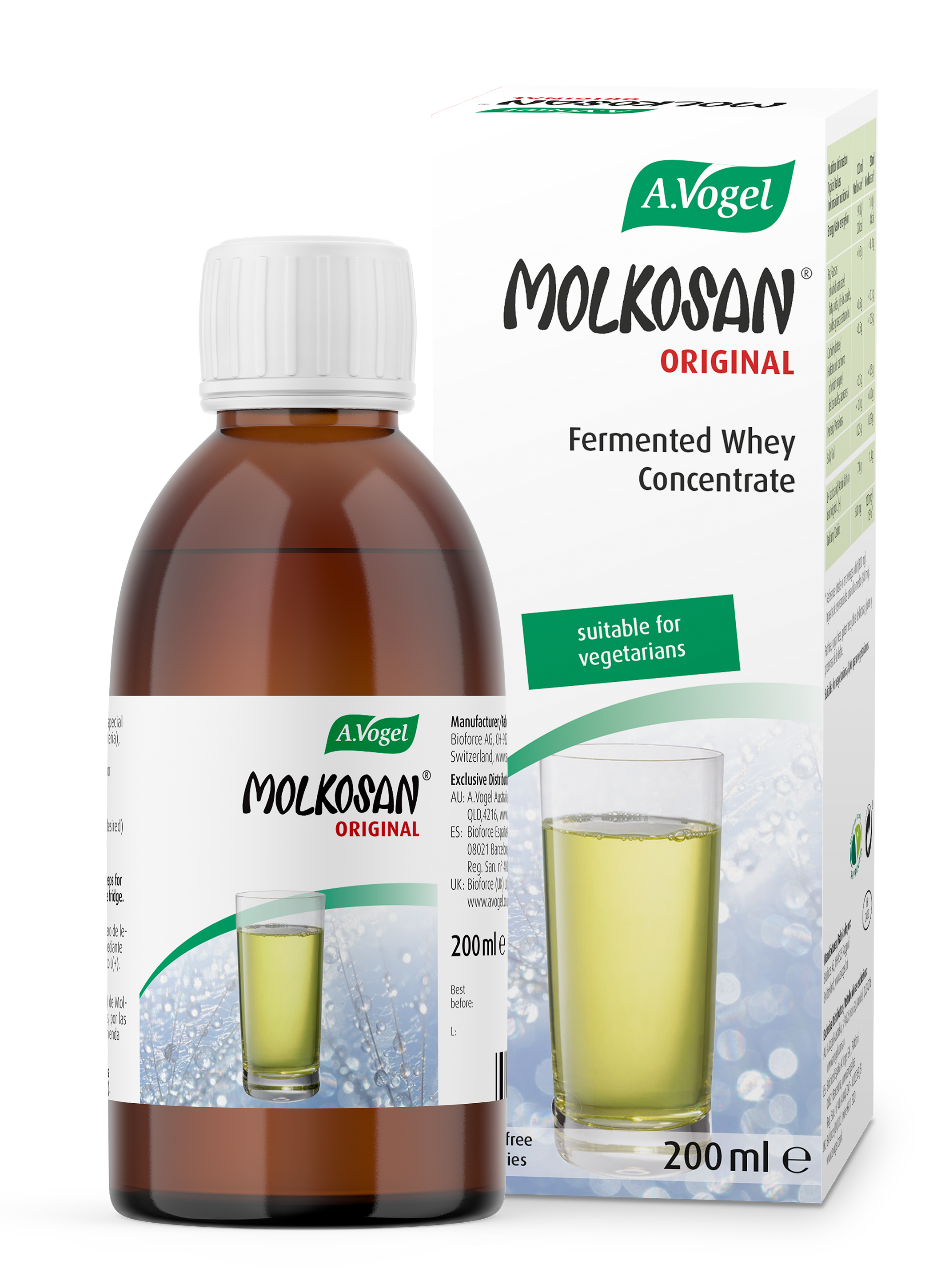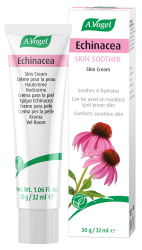What causes acne during periods?
One of the most commonly asked questions I get here at A.Vogel Talks Acne is from young women wanting to know why their skin suddenly appears to erupt in the week leading up to their period. That’s why today I thought I’d tackle this issue in a little bit more detail and, unsurprisingly, your hormones come into the picture quite a bit!
As you can see in the diagram below, your levels of oestrogen generally peak around ovulation (the time when your ovaries usually release an egg) and then drop off for the rest of your cycle. This means that the week before your period your oestrogen levels are normally pretty low, which can have an impact on testosterone.

If you’re familiar with acne, then you’ll already know that this male hormone can play a key role in stimulating your symptoms. This is because excessive amounts of testosterone can encourage your sebaceous glands to produce more sebum oil which, in turn, will increase your likelihood of experiencing an acne breakout.
Since oestrogen and testosterone normally exist in balance with one another, the drop in oestrogen near the end of your cycle can cause your testosterone levels to become unbalanced. Combine this with elevated levels of progesterone, which can also interfere with your production of sebum oil, and you have the recipe for an acne breakout.
One common way to tackle this which has gained popularity in recent years is using the contraceptive pill, not to prevent unwanted pregnancies, but to tackle acne.
How does the contraceptive pill work?

It’s estimated that, at some point in their lives, 70% of women in the UK have used the pill, but the problem is that not many of us really understand how it actually works.1 In order to understand how the pill can affect your acne, you first need to understand how it influences your hormones. That’s why I’m first going to look at the two main variants of the contraceptive pill – the combined pill and the progesterone-only pill.
The combined pill
The combined pill normally contains a combination of synthetic oestrogen and progesterone and works by thickening the mucus at the neck of the womb. This makes it much, much harder for sperm to actually reach the egg. This form of pill also impacts the lining of the womb, making it much more difficult for a fertilised egg to be implanted. You generally take this pill for 21 days straight before going on a 7 day break where, instead of experiencing a true period, you will instead experience a withdrawal bleed.
The progesterone-only pill
The progesterone-only pill, often known as the mini pill or POP, contains just one hormone: progesterone. This pill may suppress ovulation but, like the combined pill, it also works to thicken your cervical mucus and thin the lining of your uterus. Unlike the combined pill, though, you need to take the mini pill every day without a break in order for it to be effective.
Does the birth control pill really help to prevent acne?
When it comes to acne, most women are recommended to take the combined pill as this may help to settle your hormones and can balance your oestrogen and testosterone levels. The progesterone-only pill, on the other hand, isn’t as widely recommended because, as I mentioned earlier, elevated levels of progesterone are sometimes associated with an increase in your production of sebum oil.
However, it’s really important to note that everyone will react to the contraceptive pill differently and that there are dozens of different varieties out there, so finding one that’s exactly right for you can be tricky. There are also a number of side-effects associated with this type of medication, so it isn’t something to treat lightly, especially if you are a younger woman or teenager.
Common side-effects of the contraceptive pill
- Mood swings
- Nausea
- Breast tenderness
- Headaches
- Spotting
As I’ve mentioned, these side-effects aren’t to be taken lightly, as our Women’s Health Advisor Emma discusses in her blog, ‘9 side-effects of the pill and how to overcome them’. You also have to consider whether or not going on the pill is a sustainable solution. You may be happy taking the pill for a few years but what about when you decide to come off it? That underlying problem with your hormones may still be there, plus the pill doesn’t account for the other issues that can cause acne in the lead-up to your period.
What else can cause acne to flare up?
The hormonal fluctuations that occur in the week leading up to your period don’t just directly affect your skin – they can also influence other areas of your body too, which makes sense when you think about where your uterus is located within your body. The main issues that can crop up the week before your period are usually related to either sluggish bowel function or poor liver function.
Food cravings
It’s no secret that a few days or so before your period arrives, you can be assaulted by intense cravings. Funnily enough, these cravings are not usually for carrot sticks and hummus or a fresh fruit salad; instead, they tend to revolve strictly around foods of the sugary or fatty variety. This, of course, can naturally spell disaster for your skin as foods that are heavily processed, rich in dairy or full of sugar can easily trigger an outbreak. Not to mention, these types of cravings can also lead to problems with your gut which, as we shall see, can be under enough pressure as this time as it is.
What can you do?
When it comes to tackling period-related food cravings, once again our Women’s Health Advisor Emma has got you covered in her blog, ‘Don’t cave to the PMS crave!’. Here, Emma discusses a few helpful tactics to help you overcome those overwhelming urges to binge on cake, crisps and chocolaty treats. Interestingly, she mentions Molkosan, a gut-friendly prebiotic which I mention in more depth in my blog ‘Are probiotics good for acne?’. Since prebiotics can go a long way towards improving your overall gut environment, this might be worth trying if your cravings often have repercussions for your digestive system.
A.Vogel Molkosan Original | Contains Concentrated Whey | L+ Lactic Acid | Suitable for Vegetarians
£7.99 (200ml) In Stock Get it tomorrow, 5th July.
A sluggish bowel
Did you know that your gut is lined with hormone receptors? This means that this particular area is going to be very sensitive to any hormonal fluctuations. Unfortunately, in the lead up to your period, the cells lining your uterus are more likely to secrete pro-inflammatory prostaglandins which not only stimulate contractions here, but in your gut as well. This might mean that you find yourself having to make a last ditch dash to the toilet or, at the other end of the spectrum, you may find yourself suffering from constipation.
Either way, digestive upsets are not good news for your skin as your digestive system is one of the main exit routes for any toxins or waste products festering in your body. If this route becomes inefficient, then all those lovely impurities have nowhere to go but back into your body, where they can easily exacerbate any further inflammation and upset your skin, triggering an acne outbreak.
What you can do
A healthy digestive system is crucial for healthy, acne-free skin so supporting this area is crucial. If you find that, towards the time of your period, you're suffering from constipation, it might be a good idea to get things moving here by introducing more fibre into your diet (make sure you avoid processed foods too!) and investing in a natural remedy for short term relief of occasional constipation.
However, it's also possible that your stomach could be producing weak gastric secretions, which would make it more difficult for you to break down food by-products and absorb crucial nutrients. If things are a bit slow here, taking a bitter herbal remedy just 5-10 minutes before eating should help to ease this problem.
Poor liver function
Last, but definitely not least, you might want to consider what your liver is doing at this time of the month. Your liver is your body’s main ‘factory’ so to speak, which means it’s responsible for filtering toxins and, interestingly for your menstrual cycle, deactivating hormones like oestrogen. Now, if your digestive system is being impacted during your menstrual cycle, then there’s a good chance that your liver is going to be coming under pressure too.
Remember all those toxins and waste products simmering away in your digestive tract? Well, eventually some of these are going to make their way back to your liver, increasing this organ’s workload. If you couple this with a poor diet and other stressors like alcohol or medication, then your liver may become overwhelmed and, while this can definitely have some repercussions for your skin and susceptibility to acne, it can also influence the levels of oestrogen circulating in your system. If your liver is overtaxed, it won’t be able to deactivate this hormone which could place you at risk of experiencing oestrogen-dominant PMS symptoms.
What you can do
Your liver is often overlooked but it’s really important to try and support it as much as possible. This could mean cutting down on foods and drinks that place it under stress, such as caffeine, alcohol or fatty foods like burgers, chips, bacon or, in general, anything that’s been lingering in a fryer for too long. We do have a blog, ’10 amazing foods for your liver’ which should point you in the right direction when it comes to your diet but, in the meantime, a bit of additional support from our Artichoke tincture might be a good idea!







 Looking for a sensitive skin care solution that provides moisture and hydration whilst soothing and calming troubled spot prone skin?
Looking for a sensitive skin care solution that provides moisture and hydration whilst soothing and calming troubled spot prone skin?

